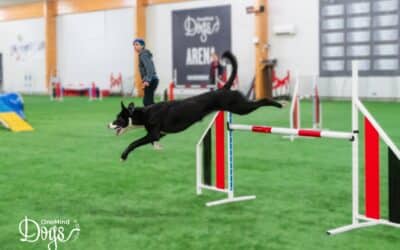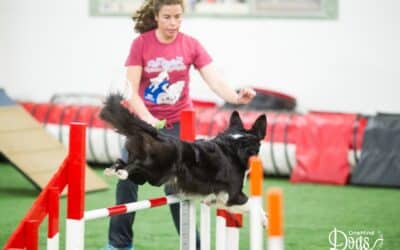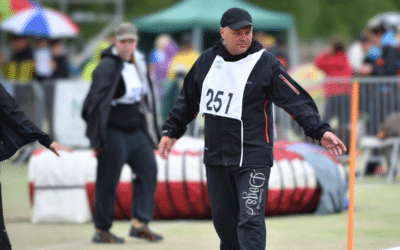Just as dogs need to learn to perform obstacles independently for smooth and clean runs in agility, handlers benefit from learning the 7 handling elements that make up a handling technique, from the dog’s perspective. At OneMind Dogs, we weave these elements into our training videos to make your handling more effective.
Most importantly: these handling elements are based on what makes the most sense from your dog’s perspective. In the process of teaching them, we’ve learned a lot ourselves! We’ve found that some elements are more intuitive for dogs than others.
The 7 handling elements
In the list below, we’ve ranked the 7 handling elements by how important they are (from your dog’s point of view) to supporting your dog’s movement on the agility course.
Our training videos help you master:
- Your movement
- Your position in relation to the dog and the obstacles
- Connection with the dog through eye contact
- The direction of your chest (“the laser point”)
- The direction of your feet
- Your hand signals
- Your verbal commands
Dogs show us every day in training that these are the core elements of every handling technique they naturally understand. From their perspective, these handling elements make your communication clear and easy to follow.
Put them all together and you have everything a handler needs to support their dog through an agility course.
Why are the 7 handling elements important?
When a technique isn’t working, more often than not, it’s missing a few handling elements. If you’ve been struggling with training and handling, this might explain why your dog isn’t responding to cues the way you want. Let’s look at an example.
Say you point with your arm to a tunnel, and shout ”tunnel,” but move in a different direction, and your chest’s “laser pointer” is facing yet another direction. These mixed signals are hard for your dog to interpret. They create confusion that impacts the quality of the run, and often, your dog’s enjoyment.
It forces your dog to guess at what you’re communicating, which doesn’t help either of you. Giving off mixed signals leaves handlers frustrated too.
“I said tunnel, but my dog was naughty and didn’t obey me,” is a common complaint. Dogs will do their best to interpret, but they can only do so much with too many conflicting signals.
Think about driving to a new city. You’re listening to and looking at the GPS, looking out for signs, all while trying to concentrate on driving. If the GPS and traffic signs conflict, you’re more likely to make a wrong turn. The same rule applies to the handling elements and your dog.
It all comes down to giving clear, precise, and consistent information.
The OneMind Dogs method includes more than 30 time-tested handling techniques, giving you solutions to every agility sequence imaginable. You may not believe this yet, but your dog already knows the first 20! They are just waiting for you to learn them, which you can do quite easily with our professional, easy to follow training videos, knowing your dog will respond to them intuitively.
So really, OneMind Dogs is all about training you as a handler. Your dog already knows it!
Learn more
Fill out the form below to watch our FREE on-demand webinar on the 7 handling elements. You’ll also receive an email series that details each handling element and how they help your dog on the agility course, with free course maps, videos and exercises!



